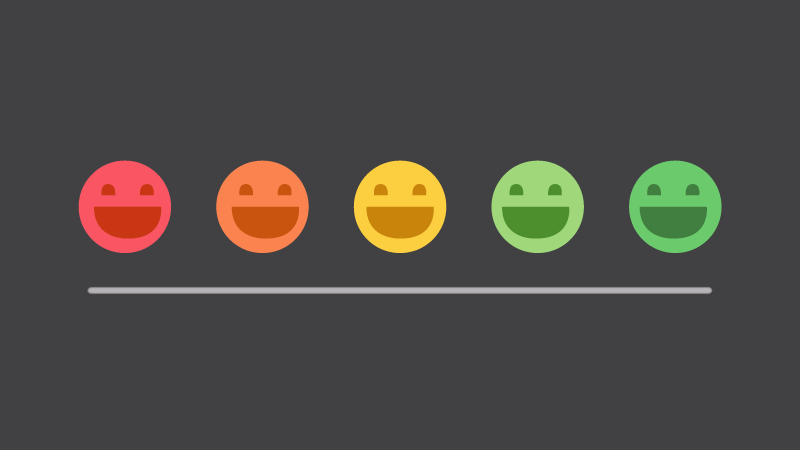Content marketing has been touted as one of the most creative ways of generating business. The aspect of content marketing that makes it stand apart from other kinds of marketing approaches and strategies is the fact that it aims at not just selling a service or product but also educating the buyer. Good content is less preachy and sales-y, and more informative and objective, so that the value it adds to a prospective buyer’s decision making process, itself acts as a driving factor to make a sale happen. However, merely creating content that you think will be consumed by a buyer is not enough. For all you know, the buyer may consume the content for its sake alone, without having any intention of buying your product or service. How, then, can you make your content marketing more fruitful, in terms of ROI? The answer is – content insight.
Before Drafting a Content Marketing Strategy
While working with a new account, it is impossible to create content that will deliver the exact expected results in the first go. Nonetheless, studying your client well, will point you in the right direction in which to head. How well you do this homework before coming up with a content marketing strategy for your client will directly affect the time and funds required to fine-tune the plan of action in the future. Well begun is half done! So, before you generate content for your client, be sure to do these three things:
- Understand your client’s aim and objectives. While you may have fantastic plans for the account, your plans need to align with their needs and goals.
- Study their philosophy. Each ‘brand’ has its own tonality, a position they hold or wish to hold in the market, etc. For your content plan to look natural, it should integrate seamlessly in the voice of the company.
- Study their history. Look at other campaigns they ran that didn’t meet their expectations. What went wrong? Why? Avoid the same things again.
5 Inputs from Content Insight that will Improve Your Outreach
Now that you have done your homework and completed the content creation step, it is time to move to the next step – analysing the performance of the content. Here are 5 metrics you should track once you push your content out on the Internet, and what each will tell you about the content you have created.
1. High click-through rate and low bounce-rate:
Higher CTR suggests your content is catering to the intent of the consumer. However, the quality of the content will decide whether your consumer stays on or leaves. So, only a high CTR that is backed by a low bounce-rate will answer the question ‘Is my content catering to the consumer’s search intent?’.
2. Engagement:
Higher rate of engagement with the content will tell you whether or not the content was relevant, useful, and a value-add to your consumer. The more number of ways in which your consumer engages with your content – be it bookmarking, sharing, downloading, or buffering the content – the stronger an indicator it is of your consumer being a ‘lead’ that you can actually convert. This is different from a high-CTR, because it differentiates between intent and curiosity to an extent.
3. Time on site:
If engagement helps differentiate curiosity from intent, time on site helps confirm it. Better time on site speaks about a lot of things; first and foremost it shows that your content is of good quality and useful. Second, it shows that your consumer is genuinely interested in the information you are sharing; in other words the consumer is actively seeking the information that your article seems to provide. This indicates that there is sure shot intent to buy the service or product being marketed (as against idle curiosity).
4. Nature of content:
Your content plan should ideally include content that will speak to nascent as well as advanced prospective buyers. This will help create separate funnels to identify the proportion of consumers belonging to each stage of the buying journey. Someone looking at preliminary content is just starting out on his journey of taking an informed decision; someone looking at reviews, or performance graphs, etc. is at an advanced stage. You can then channel different groups of people in different ways, in order to maximise lead conversion.
5. Conversions:
Content marketing is never unilateral. Within itself, a smart content marketing strategy will try different approaches/methods to talk to their consumer. As a result, not all kinds of content created will generate comparable conversions. The job then is to identify what kind of content is generating better conversions, and then to optimise or revise your content plan accordingly. Any kind of information is now only a click away. Customers, hence, do not want to be cajoled or patronised into a making a purchase. The right way to turn a prospective buyer into a happy customer, hence, is to lay bread crumbs – in the form of genuine and useful bits of information – and allow customers to walk to you. However, always remember that everyone is laying bread crumbs around! So don’t just litter the Internet with sales-y content! Keep your consumer’s best interests at heart – the rest will follow.

Bob Samuels
Principal & Founder @ TechConnectr
Bob creates ‘double-mitzvah’ win-wins in B2B lead generation by utilizing analytics and strategic relationships. He has a strong background in finance, marketing optimization, and sales enablement.
Before founding TechConnectr, Bob co-founded Los Gatos-based NetLine Corporation, a leading digital B2B marketing solution provider, where he oversaw the execution of hundreds of performance marketing programs from a wide range of clients, including Dell, Salesforce, Marketo, Microsoft, and IBM. At QuinStreet and Ziff Davis/Salesify, Bob was responsible for creating and nurturing strategic relationships with a variety of best-in-class data and marketing solution providers. He utilizes his Big-Four accounting and Fortune-500 business acumen to create success for all parties.

